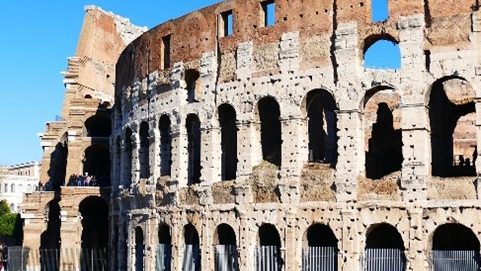The Roman Empire stands as one of the most enduring and influential civilizations in human history. From its minor beginnings as a small city-state in Italy to its vast dominion spanning over three continents, the rise and fall of the Roman Empire is a saga of ambition, conquest, innovation, and eventual decline. The Roman Empire was a major empire in the Mediterranean region in the classical period. Over centuries, the Roman Empire expanded to control the land on all sides of the Mediterranean. Power was always held by the aristocrats of Rome and the Roman emperors until the empire split apart.

At its peak in 117 CE, the Roman Empire controlled about 5 million square kilometers of land. From East to West, it stretched from Iberia to Iraq, and from North to South, it stretched from England to Egypt. By 285 CE the empire had grown too vast to be ruled by the central government at Rome and so was divided by Emperor Diocletian into a Western and an Eastern Empire.
Rome evolved from a monarchy to a republic, marked by citizen participation in governance and the rule of law. The Roman Republic expanded its territory through military conquests, assimilating neighboring people and cultures into its fold. The well-trained and disciplined Roman legions played a crucial role in the empire’s expansion across Europe, North Africa, and the Near East.
Under the leadership of Julius Caesar and Augustus, Rome transitioned from a republic to an empire. The influence of the Roman Empire reached its apex in the 2nd century CE. At its peak, the Roman Empire conquered over two million square miles and a population of around 50-90 million people, becoming the most populous and extensive empire of antiquity.
Despite its remarkable success, the Roman Empire faced internal and external challenges which ultimately contributed to its decline and fall. Some of the primary internal factors were political instability, civil wars, and political corruption. Economic issues such as inflation, taxation, wide gap between the rich and poor were also responsible for the empire’s fall. External threats such as barbarian invasions, posed significant challenges to Roman security. The rise of Christianity also contributed to the decline of traditional Roman values and institutions, leading to cultural and societal transformations.
In conclusion, the rise and fall of the Roman Empire is a timeless tale that continues to captivate everyone. from its beginnings to its eventual demise, Rome’s legacy endures based on western civilization, shaping politics, laws, language, culture, architecture, and History for centuries long.
ARTICLE BY – ANURAG PANDEY | EDITED BY – SAHIL HARVANI



